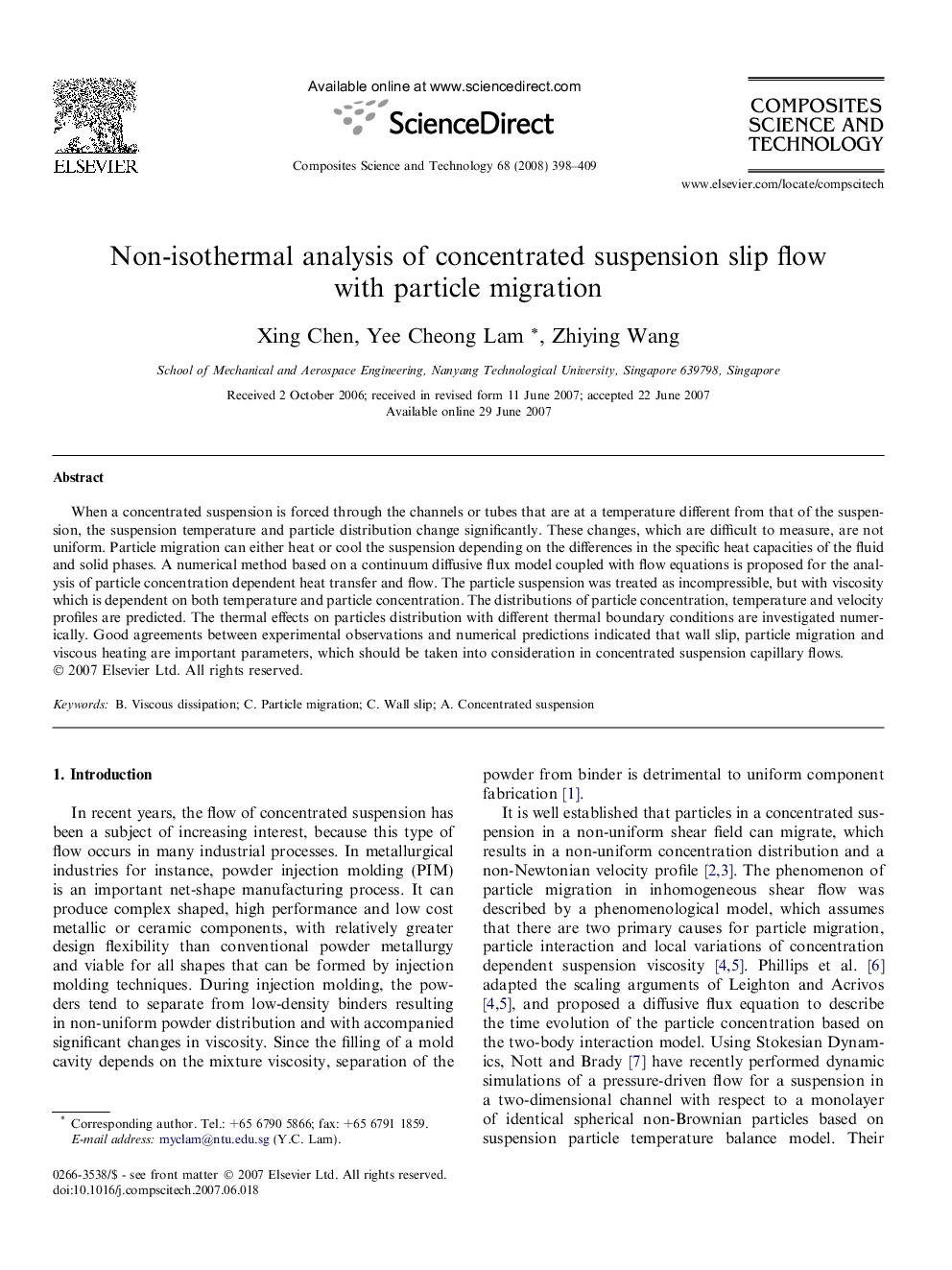| Article ID | Journal | Published Year | Pages | File Type |
|---|---|---|---|---|
| 822486 | Composites Science and Technology | 2008 | 12 Pages |
When a concentrated suspension is forced through the channels or tubes that are at a temperature different from that of the suspension, the suspension temperature and particle distribution change significantly. These changes, which are difficult to measure, are not uniform. Particle migration can either heat or cool the suspension depending on the differences in the specific heat capacities of the fluid and solid phases. A numerical method based on a continuum diffusive flux model coupled with flow equations is proposed for the analysis of particle concentration dependent heat transfer and flow. The particle suspension was treated as incompressible, but with viscosity which is dependent on both temperature and particle concentration. The distributions of particle concentration, temperature and velocity profiles are predicted. The thermal effects on particles distribution with different thermal boundary conditions are investigated numerically. Good agreements between experimental observations and numerical predictions indicated that wall slip, particle migration and viscous heating are important parameters, which should be taken into consideration in concentrated suspension capillary flows.
